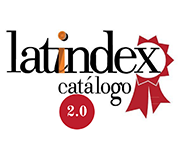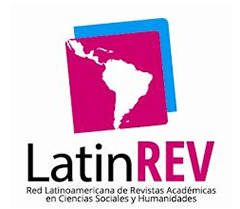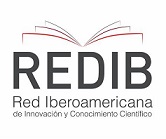A Bibliometric Analysis of the Relationship between Innovation and Leadership through the Lens of Complexity
DOI:
https://doi.org/10.20983/novarua.2025.30.4Keywords:
Bibliometry, Innovation, Leadership, Complexity theoryAbstract
This paper aims to analyze the conceptual and thematic evolution of the relationship between leadership and innovation from a complex theory perspective. A bibliometric analysis was conducted using Biblioshiny (RStudio), evaluating 237 peer-reviewed articles indexed in Scopus published between 2004 and 2024. Results indicate a steady increase in scholarly output, particularly since 2021, highlighting the field’s consolidation and growing significance. The study identifies key patterns and concludes that future research should emphasize qualitative methodologies to explore the human and social dimensions of leadership. This approach would facilitate a deeper understanding of how adaptive and innovative capacities emerge within complex organizational environments. These insights provide a comprehensive framework to guide future studies addressing leadership and innovation dynamics in increasingly uncertain contexts.
References
Afsar, B., y Umrani, W. A. (2020). Transformational leadership and innovative work behavior: The role of motivation to learn, task complexity and innovation climate. European Journal of Innovation Management, 23(3), 402-428. https://doi.org/10.1108/EJIM-12-2018-0257.
Agarwal, R., y Gupta, B. (2021). Innovation and Leadership: A Study of Organizations Based in the United Arab Emirates. Foundations of Management, 13(1), 73-84. https://doi.org/10.2478/fman-2021-0006.
Akter, R, Rathnayaka, S, y Ahmadi, Z. (2023). The effect of leadership and organisational culture on organisational innovation. International Journal of Services Technology and Management, 28(5), 360-388. http://doi.org/10.1504/IJSTM.2023.135084.
Ali, A., Jiang, X., Ali, A., y Qadeer, A. (2023). A moderated mediation model linking entrepreneurial leadership to green innovation: An upper echelons theory perspective. Creativity and Innovation Management, 32(1), 41-57. https://doi.org/10.1111/caim.12538.
Añazco, K., Valdivieso, R., Sánchez, O., y Guerrero, M. (2018). Los estilos de liderazgo y su efecto en la satisfacción laboral. INNOVA Research Journal, 3(10), 142-148. https://doi.org/10.33890/innova.v3.n10.2018.908.
Aria, M., y Cuccurullo, C. (2017). bibliometrix: An R-tool for comprehensive science mapping analysis. Journal of Informetrics, 11(4), 959-975. https://doi.org/10.1016/j.joi.2017.08.007.
Aristóteles (2015). Política (Traducido por C. García Gual y A. Pérez Jiménez). Alianza Editorial.
Aslam, H.D., Capusneanu, S., Javed, T., Rakos, I.S., y Barbu, C.M. (2024). The Mediating Role of Attitudes towards Performing Well between Ethical Leadership, Technological Innovation, and Innovative Performance. Administrative Sciences, 14(4), 62. https://doi.org/10.3390/admsci14040062.
Bass, B. M. (1985). Leadership and performance beyond expectations. Free Press.
Bass, B. M. (1990). From transactional to transformational leadership: Learning to share the vision. Organizational Dynamics, 18(3), 19-31. https://doi.org/10.1016/0090-2616(90)90061-S.
Burns, J. M. (1978). Leadership. Harper & Row.
Colovic, A. (2022). Leadership and business model innovation in late internationalizing SMEs. Long Range Planning, 51(1), 102083. https://doi.org/10.1016/j.lrp.2021.102083.
Costa, J., Pádua, M., y Moreira, A. C. (2023). Leadership Styles and Innovation Management: What Is the Role of Human Capital? Administrative Sciences, 13(2), 47. https://doi.org/10.3390/admsci13020047.
Dong, B. (2023). How Transformational Leadership Affects Firm Innovation Performance - A Perspective Based on Environmental Dynamism and Business Model Innovation. Journal of Chinese Human Resources Management, 14(2), 38-50. https://doi.org/10.47297/wspchrmWSP2040-800503.20231402.
Donthu, N., Kumar, S., Mukherjee, D., Pandey, N., y Lim, W. M. (2021). How to conduct a bibliometric analysis: An overview and guidelines. Journal of Business Research, 133, 285-296. https://doi.org/10.1016/j.jbusres.2021.04.070.
Flocco, N., Canterino, F., y Cagliano, R. (2021). Leading innovation through employees' participation: Plural leadership in employee-driven innovation practices. Leadership, 17(5), 499. https://doi.org/10.1177/1742715020987928.
Goleman, D. (2000). Leadership that gets results. Harvard Business Review.
He, S. C., Zhao, W. Y., Li, J. F., Liu, J. T., y Wei, Y. T. (2023). How environmental leadership shapes green innovation performance: A resource-based view. Heliyon, 9(7), e17993. https://doi.org/10.1016/j.heliyon.2023.e17993.
Judge, T. A., y Piccolo, R. F. (2004). Transformational and Transactional Leadership: A Meta-Analytic Test of Their Relative Validity. Journal of Applied Psychology, 89(5), 755-768. https://doi.org/10.1037/0021-9010.89.5.755.
León, B., Fernandez-Rio, J., Rivera-Pérez, S., y Iglesias, D. (2023). Cooperative learning, emotions, and academic performance in physical education: A serial multiple mediation model. Psicología Educativa, 29(1), 75-82. https://doi.org/10.5093/psed2023a2.
Lewin, K., Lippitt, R., y White, R. K. (1939). Patterns of aggressive behavior in experimentally created "social climates." The Journal of Social Psychology, 10, 269-299. https://doi.org/10.1080/00224545.1939.9713366.
Li, M., y Xiao, W. H. (2023). Research on the Effect of E-Leadership on Employee Innovation Behavior in the Context of Self and Relationship. Journal of Organizational and End User Computing, 35(1), 35. https://doi.org/10.4018/JOEUC.317090.
Likert, R. (1961). New patterns of management. McGraw-Hill.
Luhmann, N. (1995). Social systems. Stanford University Press.
Maak, T., Pless, N. M., y Voegtlin, C. (2016). Business statesman or shareholder advocate? CEO responsible leadership styles and the micro-foundations of political CSR. Journal of Management Studies, 53(3), 463-493. https://doi.org/10.1111/joms.12195.
Mahmood, M., Uddin, M. A., y Fan, L. (2019). The influence of transformational leadership on employees’ creative process engagement: A multi-level analysis. Management Decision, 57(3), 741-764. https://doi.org/10.1108/MD-07-2017-0707.
Morin, E. (2005). Introducción al pensamiento complejo. Gedisa.
Muenjohn, N., Mcmurray, A. J., Kim, J., y Afshari, L. (2024). Workplace innovation and work value ethics: The mediating role of leadership in Asian SMEs. Journal of Innovation & Knowledge, 9(3), 100547. https://doi.org/10.1016/j.jik.2024.100547.
Pasaribu, F., Bulan, T. R. N., Muzakir, y Pratama, K. (2021). Impact of strategic leadership and organizational innovation on strategic management: mediational role of it capability. Polish Journal of Management Studies, 24(2), 354-369. https://doi.org/10.17512/pjms.2021.24.2.22.
Platón (2013). La República (Traducido por M. Fernández-Galiano y J. M. Pabón). Alianza Editorial.
Pritchard, A. (1969). Statistical bibliography or bibliometrics? Journal of Documentation, 25(4), 348-349. https://doi.org/10.1108/eb026482.
Rasheed, M. A., Shahzad, K., y Nadeem, S. (2021). Transformational leadership and employee voice for product and process innovation in SMEs. Innovation & Management Review, 18(1), 69-89. http://doi.org/10.1108/INMR-01-2020-0007.
Rohlfer, S., Hassi, A., y Jebsen, S. (2022). Management Innovation and Middle Managers: The Role of Empowering Leadership, Voice, and Collectivist Orientation. Management and Organization Review, 18(1), 108-130. https://doi.org/10.1108/EJIM-03-2022-0101.
Uhl-Bien, M., y Arena, M. (2018). Leadership for organizational adaptability: A theoretical synthesis and integrative framework. The Leadership Quarterly, 29(1), 89-104. https://doi.org/10.1016/j.leaqua.2017.12.009.
Uhl-Bien, M., y Marion, R. (2020). Complexity leadership in bureaucratic forms of organizing: A meso model. The Leadership Quarterly, 31(2), 101289. https://doi.org/ 10.1016/j.leaqua.2009.04.007.
Uhl-Bien, M., Marion, R., y McKelvey, B. (2007). Complexity Leadership Theory: Shifting leadership from the industrial age to the knowledge era. The Leadership Quarterly, 18(4), 298-318. https://doi.org/10.1016/j.leaqua.2007.04.002.
Vicente-Ramos, W., y Durán-Carhuamaca, A. (2023). Bibiliometric Analysis of the Scientific Production of Deep Learning and Big Data. International Journal of Intelligent Systems and Applications in Engineering, 11(4), 355-362. https://hdl.handle.net/20.500.14559/156.
Vladic, N., Maletic, D., y Maletic, M. (2021). Determinants of Innovation Capability: An Exploratory Study of Inclusive Leadership and Work Engagement. Quality Innovation Prosperity-Kvalita Inovacia Prosperita, 25(2), 130-152. http://doi.org/10.12776/QIP.V25I2.1596.
Zupic, I., y Čater, T. (2014). Bibliometric Methods in Management and Organization. Organizational Research Methods, 18(3), 429-472. https://doi.org/10.1177/1094428114562629.
Downloads
Published
Issue
Section
License
Copyright (c) 2025 José Andrés Gutiérrez Vázquez

This work is licensed under a Creative Commons Attribution-NonCommercial-ShareAlike 4.0 International License.
All contents of the electronic edition of the journal are distributed under a license and distribution "Creative Commons Attribution-Noncommercial-ShareAlike 4.0 International" (CC-BY-NC-SA). You can see from here the informative version of the license.
Those authors/publications as having this journal agree to the following terms:
a) Is allowed and recommends authors / as disseminate their work via the Internet (p. eg .: institutional telematic files or on their website), which can produce interesting exchanges and increase appointments of the published work. (See The Effect of Open Access).












